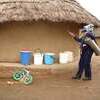Women’s Month: Elona Toska on supporting adolescent mothers to lead fulfilling lives
16 August 2022 | Story Niémah Davids. Photo Supplied. Read time 9 min.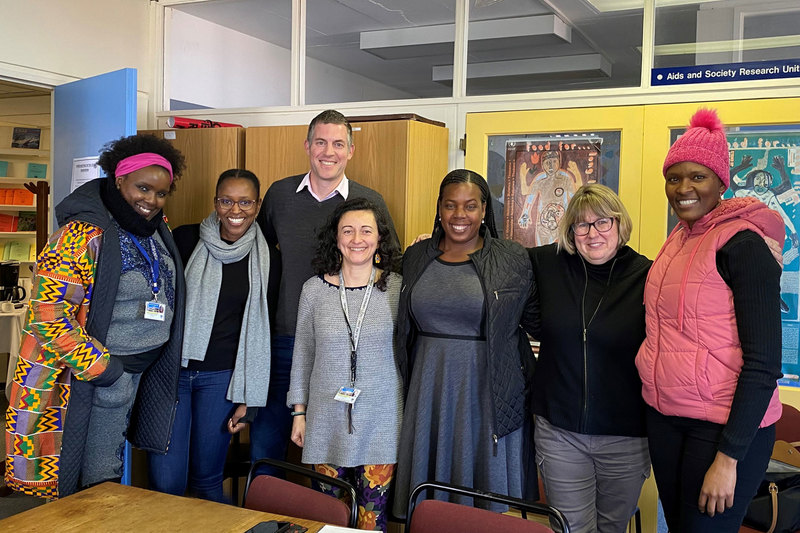
It’s possible for adolescent mothers to lead happy, healthy and fulfilled lives with their loved ones. And providing them with adequate support that takes their needs and desires into consideration will help to accelerate this, said the University of Cape Town’s (UCT) Dr Elona Toska.
Dr Toska is an academic in UCT’s Centre for Social Science Research and one of the newest members to enter Vice-Chancellor Professor Mamokgethi Phakeng’s Future Leaders cohort. Toska’s research to date has been focused on how to help adolescents, young adults, and adolescent mothers – including those affected by HIV in resource-constrained communities – to have healthy, safe and fulfilling relationships with their loved ones.
In commemoration of Women’s Month, UCT News caught up with Toska to discuss her research and work in under-resourced communities, and her findings to date.
“This research is a collective effort and builds on the talent, intelligence and hard work of an inspiring group of researchers. We are part of a transformational, mentorship chain of primarily women, all of whom are committed to fostering a cohort of strong social scientists at UCT and partner institutions,” she said.
Niémah Davids (ND): Please provide us with an outline on your research focus area.
Elona Toska (ET): My research focuses on the sexual and reproductive health outcomes of young people living with and affected by HIV/AIDS. Since 2018, I have been focused on understanding the needs of adolescent mothers in South Africa and designing appropriate solutions to support them. Through my work, in collaboration with an excellent team at partner institutions, including the University of Oxford, our goal is to help adolescents and young adults build healthy relationships with their loved ones.
ND: Through this work, what have you uncovered?
ET: Our findings have underscored the need for evidence-informed, yet locally relevant programmes to help reduce the risk of HIV among young people, especially young women who have become mothers. And to effectively support those already living with HIV to thrive in their everyday lives.
“These findings speak to the need … to identify individual or a combination of provisions to maximise SDG-related achievements for children and adolescents.”
In addition to our South Africa-based work, our team has also worked closely with research teams in other African countries to identify development accelerators to help us reach multiple United Nations Sustainable Development Goals (SDGs), including access to healthcare, education and employment opportunities. These findings speak to the need – especially during times of restricted fiscal resources by governments and funders – to identify individual or a combination of provisions to maximise SDG-related achievements for children and adolescents. While the exact implementation models and combinations vary, patterns of accelerators across different contexts are currently emerging. These include social protection for those most vulnerable (sometimes through cash transfers or similar mechanisms), parenting and caregiving support, adolescent-friendly health services, psychosocial and peer-based support, and keeping young people in schools, including access to quality, age-appropriate comprehensive [sex] education.
ND: Tell us about the feedback you’ve received from the adolescents and young adults you’ve interviewed for your research?
ET: Our work with young people affected by HIV, especially adolescent mothers in the Buffalo City District in East London, has yielded some important findings. To start, it has highlighted the importance of addressing psychosocial issues, mental health challenges, and experiences in healthcare facilities. The majority of young people do not need to access healthcare services regularly – adolescents are resilient and not as fragile as younger children and, hopefully without the age-related disease burden of late adulthood. But for those who do, adolescents living with chronic illnesses such as HIV and tuberculosis, or those who experience early pregnancies and parenthood, we need to be prepared to support them to overcome their adversities, and to survive and thrive. Some of the programmes we are developing, and testing include peer-based support models, working with local NGOs to refine their services, and providing evidence for advocacy to those who are passionate about supporting young people.
ND: Have any common themes come through from respondents during your information gathering process?
ET: One of the questions during this phase of our research is enquiring how young people experience access to healthcare services. One of the key themes that continues to come across is that young people feel judged (shouted at) by healthcare providers for having sex or missing their medication. However, we acknowledge that healthcare providers may not have actually raised their voices or shouted. But their style of communication may be perceived as such, especially by young people who are already very vulnerable, stressed and feel stigmatised about their health and life experiences. This, in turn, shapes the way they engage with healthcare workers and health services.
“Our biggest goal, and my personal drive, is to generate the kind of research that will help and support people working with adolescents and young adults.”
We’re in the process of analysing data on the needs and experiences of young mothers and their children in healthcare facilities. Respectful, adolescent-responsive care continues to be an important driver of safe and healthy practices. We acknowledge that this can be a big ask for our over-stretched healthcare providers, and that’s the next step of our research: how to bridge the gap, and support healthcare providers and their patients [to] have positive engagements with each other.
ND: What do you hope to achieve with your research?
ET: Our biggest goal, and my personal drive, is to generate the kind of research that will help and support people working with adolescents and young adults, particularly adolescent mothers. It’s also important that government’s policies and programmes be in line with what young people need.
Through this work, I’ve also discovered that all those who work with adolescents and young adults, such as healthcare providers, social workers and teachers, accumulate myths about who young people are, what they do and why they do it. As a researcher who tries to bring the lived experiences of young people to places where decisions are made, I would really like to use my research to challenge these myths, but to do so without negating those experiences caregivers and other service providers encounter daily. For example, many believe that young women become pregnant to access government’s Child Support Grant. This kind of belief gets in the way of providing services to young women who have become pregnant or to young mothers who need the Child Support Grant to support their new-born children. It must be said that accessing the Child Support Grant in a timely way may make a difference in supporting young mothers to return to school and to look after their children, which is critical to the long-term health, educational and socio-economic outcomes of families. Evidence from many leading South African researchers, and our work, highlights that access to social protection supports young women and their families to delay unintended early pregnancy and HIV risk.
ND: Tell us about the broader societal impact you’re hoping your research will have.
ET: In a couple of decades, the African continent will be home to nearly half a billion adolescents and young people. Many young women will have at least one child during the second decade of their lives. Despite our best efforts to date, HIV/AIDS-related complications, violence and self-harm, with increasing mental health burdens, are linked to high rates of mortality and morbidity during the second decade of life. We need to design and adapt our programmes and services to respond to the changing and growing needs of our adolescents and young people. My hope is that our research will inform these decisions, support young people to be better understood and supported in decision-making spaces, and to bring a social science lens to our biomedical and health interventions.
ND: What has been most gratifying about your research, and why?
ET: For me, the most rewarding part of my research has been working directly with young people to understand their lives and find ways to document and share their experiences through different research methods. Many of them live in really hard conditions, but they show up daily and work to make the best life for themselves and their families. It is also rewarding to have opportunities to engage with stakeholders (implementing organisations, policy makers, and donors) who are really keen to make evidence-inspired decisions for young people. There are many challenges in doing research, but finding the right balance between raising research funds, collecting data, analysing, publishing and sharing findings while meaningfully engaging with adolescents and their families is what makes it all worthwhile.
The cherry on top of the research-to-evidence cake for me has been to do our work together with an inspiring and brilliant cohort of early career researchers, students, fellows and established researchers, who are ready to tackle the social issues our adolescents and young people may encounter in the decades to come through rigorous, high-impact research.
 This work is licensed under a Creative Commons Attribution-NoDerivatives 4.0 International License.
This work is licensed under a Creative Commons Attribution-NoDerivatives 4.0 International License.
Please view the republishing articles page for more information.
Research & innovation
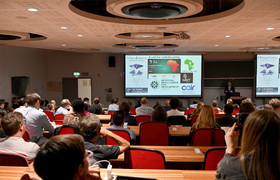
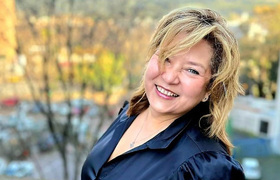



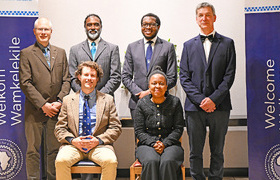




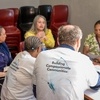




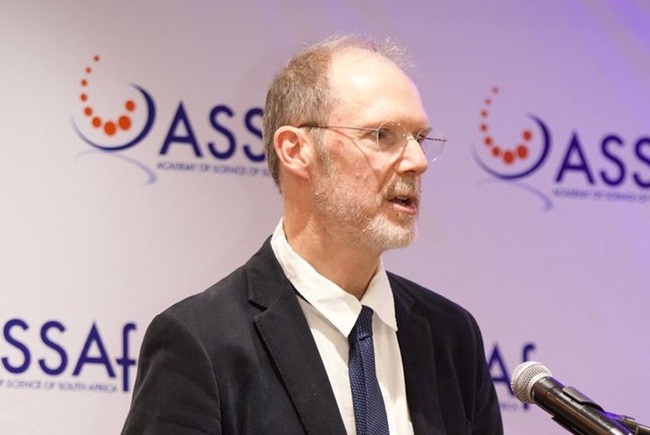




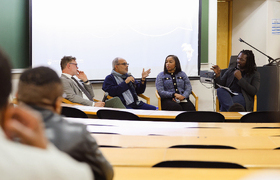

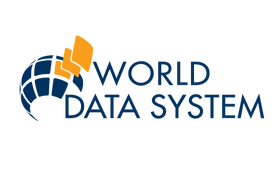






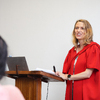



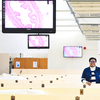
.jpg)

